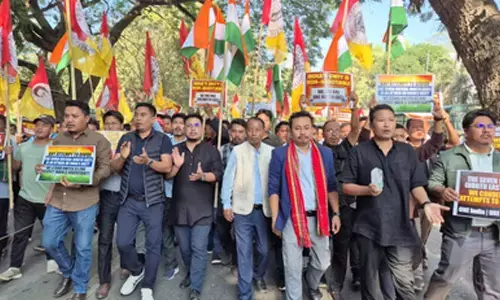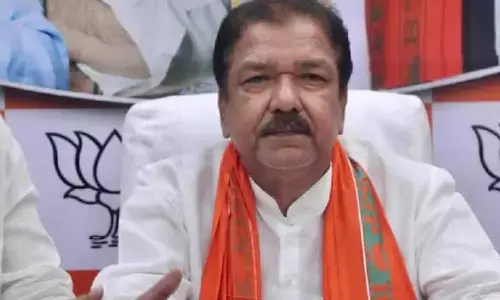Yes! 15 % growth rate can be achieved

The semifinal to the general elections has brought forth the extreme dissatisfaction with the state of the economy A total of 7 percent GDP growth rate is not acceptable even if it may be the highest among major countries in the world We need to move and repair the four contributors to growth capital, labour, technology and institutions so that we can achieve 15 percent growth rate
The semifinal to the general elections has brought forth the extreme dissatisfaction with the state of the economy. A total of 7 percent GDP growth rate is not acceptable even if it may be the highest among major countries in the world. We need to move and repair the four contributors to growth capital, labour, technology and institutions so that we can achieve 15 percent growth rate.
The combined budget of Central and State governments was Rs 3838,000 crore in 2015-16. In the current financial year ending March 2019, it will be about Rs 4570,000 crore. Of this, ‘development expenditure’ consisting largely of expenditures on education, health and other welfare schemes such as MNREGA would be about Rs 2400,000 crore.
Nine out of ten of these welfare activities can be closed down leaving only the essential public services like educational assessment and health research. This would make available Rs 2160,000 crore. Half of this money, that is Rs 1081,000 crore can be transferred directly into the bank accounts of the 130 crore citizens giving Rs 8,317 per person per year or Rs 41,600 per family of five persons per year.
The recipients could use this money to buy health and educational services from the private sector. The other half of Rs 1080,000 crore can be used to augment capital investment by the government and take the economy to a higher growth trajectory.
I had seen a World Bank report about 20 years ago which said that the salaries of government employees in India were 4.7 times the per capita income of our people. This was highest among the major countries in the world. The ratio in most countries was 1 to 2 times the per capita income.
The salaries, DA and pensions of the government servants can be frozen at the present levels until the per capita income increases and the ratio is reduced to 2 times. The salaries and pensions of government servants are about 8 percent of our GDP.
The GDP which was Rs 13862,000 crore in 2015-16 and would be 16,495,000 crores in the current year. The salaries of government servants at present are about Rs 1320,000 crores.
This will remain frozen at this level. The GDP will increase and the additional earnings can be used for capital investment by the government. Gradually release about one-half of this amount, that is, Rs 660,000 crores will become available for capital investment.
More money can be made available by control of corruption. Professor R Vaidyanathan of IIM Bengaluru has estimated about 10 years ago that Indians pay Rs 400,000 crores every year in bribes to government servants. Today the amount would be about Rs 800,000 crores.
A big chunk of this money can be saved. The government should set up an independent evaluation agency, perhaps in collaboration with known global agencies, to evaluate the performance of one-fifth of all government servants every year.
This evaluation must include taking confidential feedback from the related “customers” of the government services. The junior engineer of the State Electricity Board should be evaluated confidentially by 1000 customers within his jurisdiction. Those government servants ranked among the lowest 10 percent should be retired compulsorily. I think corruption will reduce by 75 percent if above step is implemented.
That will release Rs 600,000 crores for investment by the people. The capital investment by the government was Rs 10,28,000 crore in 2015-16. It would be about Rs 12,20,000 crore in the current year. We can add Rs 10,80,000 crore from dismantling the welfare state, Rs 6,60,000 crores from freezing the salaries of government servants, and Rs 600,000 crores from savings of bribes leading to more than trebling the capital investment by the government to Rs 35,60,000 crores.
Capital investment by the government such as in research, e-governance, highways and airports is the backbone of the economy. The rate of GDP will treble from the present 7 percent to 21 percent. Discounting my estimates by one-half, we can still get to 15 percent GDP growth rate. Author was formerly Professor of Economics at IIM Bengaluru















